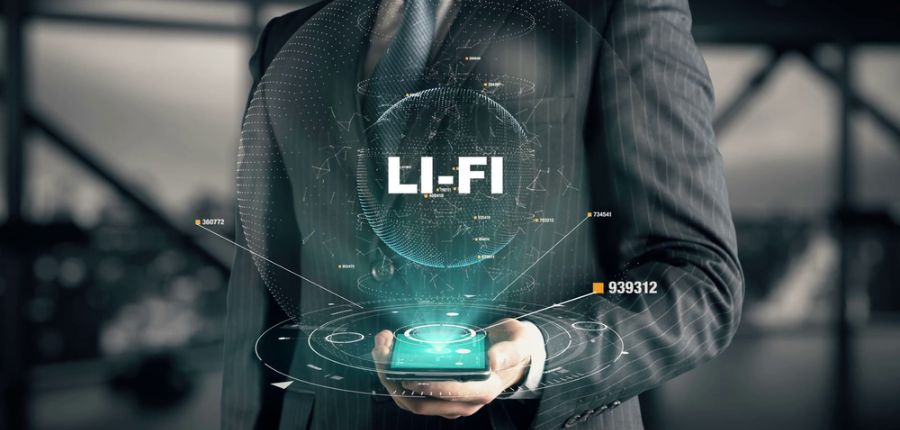Li-Fi vs Wifi: Which is Better?

When it comes to home and office internet connections, two of the most popular options are Wi-Fi and Li-Fi. But which one is better? In this blog post, we'll explore the differences between the two technologies, and compare their advantages and disadvantages to help you make an informed decision about which one is the best for your needs. We'll look at the speed and range of each, as well as the security concerns associated with each technology. Read on to learn more about Li-fi vs wifi, and which one is the right choice for you.
What is li-fi?
Li-fi, short for light fidelity, is a wireless communication technology that uses light to transmit data. It utilizes visible light communication (VLC) or infrared radiation (IR) to deliver internet connection. This technology offers a number of benefits over traditional wifi, including faster speeds, more secure connection and more energy efficient than the current wifi standards.
Li-fi uses LED lights to transmit information as binary code – a combination of 0s and 1s. The LED bulbs are outfitted with special chips that convert electrical signals into binary code, and then back into electrical signals on the receiving end. A receiver, such as a laptop or smartphone, picks up the signal and translates it into usable internet data.
Li-fi has become increasingly popular in recent years due to its advantages over traditional wifi networks. Because li-fi is a wireless communication technology, it can be used in places where traditional wifi networks cannot, such as on airplanes, or in hospitals and other sensitive environments. Additionally, because the signals used in li-fi are much shorter than those used in traditional wifi networks, li-fi networks can offer faster speeds and more secure connections. Furthermore, li-fi is also more energy efficient than traditional wifi networks.
Advantages of li-fi over wifi:
Li-fi, or light fidelity, is a cutting-edge technology that uses visible light communication (VLC) to transmit data between devices. Compared to traditional Wi-Fi, li-fi offers a number of advantages.
First, li-fi is more secure than wifi. Because it uses light to transmit data, it’s almost impossible for someone outside the room to intercept or eavesdrop on the transmission. This makes it ideal for businesses and other entities that need to protect sensitive data.
Second, li-fi is faster than wifi. The speed of light is much faster than radio waves, so li-fi can theoretically transfer data at up to 224 gigabits per second (Gbps). By comparison, current wifi networks typically offer speeds of no more than 100 Mbps. This means that li-fi could potentially be 100 times faster than wifi.
Third, li-fi is more energy efficient than wifi. Unlike radio waves, light can be focused, which means that only the devices that need to receive the signal do. This allows li-fi signals to be more concentrated and therefore more efficient.
Finally, li-fi is easier to install than wifi. Because the technology uses existing LED lights, it can be installed in almost any environment without needing complicated wiring or antennas. This makes it ideal for environments that don’t have easy access to traditional wireless networks.
Disadvantages of li-fi over wifi:
One of the biggest drawbacks of li-fi is its limited range. Li-fi has a shorter range than wifi due to the reliance on light instead of radio waves, so the transmission distance is limited to the area illuminated by the LED light source. This can be an issue in larger buildings and environments where long distances are needed.
Another disadvantage is that li-fi is not as reliable as wifi. Since it is dependent on a visible light source, any disruption to the signal such as changes in lighting or the obstruction of the signal can reduce its effectiveness.
The last disadvantage of li-fi is that it requires more complicated equipment than traditional wifi. Li-fi requires an LED light source, photo sensors, and other specialized equipment, which makes it more expensive and difficult to install than traditional wifi.
Which is better?
When it comes to deciding which technology is better for your needs, it’s important to consider the advantages and disadvantages of each. Li-fi and wifi both have their own pros and cons.
Li-fi has the advantage of being significantly faster than wifi, as it’s based on visible light communication instead of radio waves. It’s also more secure, as visible light does not penetrate walls or other obstacles, meaning that signals cannot be intercepted by someone outside of a room. Additionally, since li-fi does not use radio waves, it is less prone to interference from other wireless signals in the area.
On the other hand, there are some disadvantages to li-fi compared to wifi. Li-fi requires direct line-of-sight to the receiver in order to work properly, whereas wifi can send signals around corners or through walls. Additionally, li-fi is not yet widely available as it is still in its early stages of development. Lastly, li-fi is limited to indoor spaces as direct sunlight can interfere with the signal.
When it comes to deciding which technology is better for you, it really depends on your individual needs and requirements. For those who need a secure and fast connection, li-fi may be the best choice. However, for those who need a connection that can travel around corners and penetrate walls, wifi may be the better option.




No comments